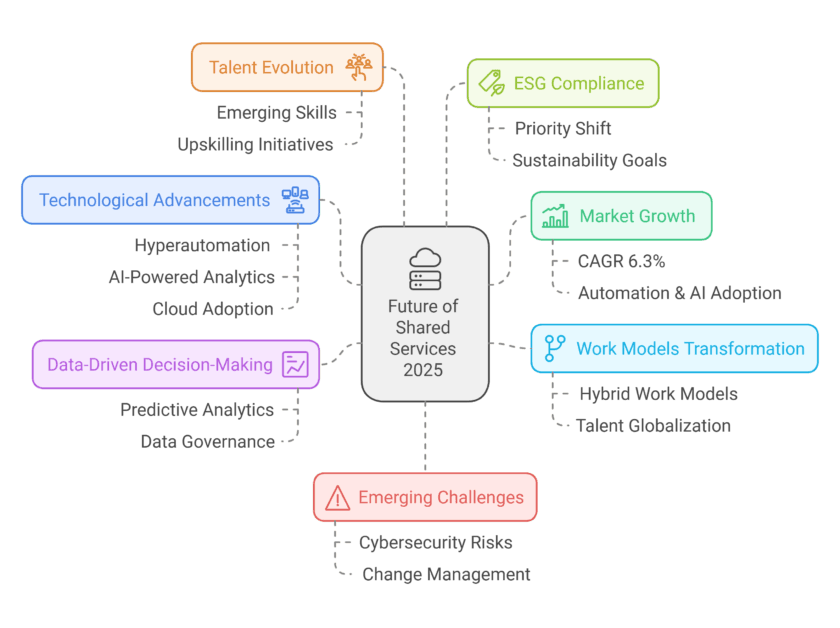Illuminating Pathways: Tales of Rising Stars in Shared Services
Alright, let’s dive straight in—no warm-up laps! Ever tried watching a rising star? It’s like catching a glimpse of a shiny new penny in a dusty savings jar. So, what does that look like in **shared services transformation**? Spoiler: It’s messy, but in a good way. You see, there’s this whole world in shared services—like a giant playground for middle and senior management. It’s exciting, like a kid on a jungle gym (but with spreadsheets and KPIs). And the best part? The rising stars! They’re redefining what we thought we knew about **process optimization**. Those folks make hearts race and brains buzz—because, let’s face it, who doesn’t love a good underdog story? Who Says You Can’t Shine? (Or maybe that’s just my coffee kicking in?) Anyway, have you noticed how some people just… glow? In shared services, it’s often these talented individuals tackling the complexities of workflows like they’re choreographing a flash mob. Picture this: a rising star spots inefficiencies, imagines a streamlined process, and then bam! It’s like watching a magician pull a rabbit out of a hat. Suddenly, everyone’s working smarter—not harder. Kids, take notes. Innovative Thinking: Think outside the boxes… or rip them apart! These rising stars break barriers, questioning old-school methods. They use technology like it’s a brush, painting efficiency onto an outdated canvas. Collaborative Spirit: Ever notice how together, everything feels possible? Yeah, some folks just have that spark. They rally the troops. Share ideas. Boom, creativity flourishes! Oh—and speaking of teamwork, isn’t it wild how collaboration can turn into a snowball effect? (Who doesn’t love a good avalanche of ideas?!) You roll one thought, and suddenly, the whole team’s passing it along, adding their twists and turns. Kind of like that game of telephone, but hopefully with less miscommunication. Learnings from the Field Now, buckle up because here’s where it gets juicy. I’ve got some tales of those rising stars—like a delightful mix of fairy dust and hard work (no fairy godmothers involved, though, I promise!). Case Study: Let’s talk about Jamie. (Not *that* Jamie, the other one.) Jamie took a mundane payroll process and turned it into a well-oiled machine. How? By adding a sprinkle of empathy—and I mean real empathy—not the corporate buzzword variety. That’s the secret sauce. Suddenly, employees felt valued, and engagement shot up—like when you find an extra fry at the bottom of the bag. Another Star: Alex. This one. Oh boy, swim in efficiency! Alex noticed a bottleneck in order processing. You know, that moment where it feels like you’re waiting for paint to dry? Well, Alex jumped in, optimized the workflow, and now? It’s like a well-timed symphony. You could even dance to it—if that’s your thing. They didn’t just teach their teams **optimization techniques**; they inspired a whole culture of innovation. (Imagine the office being so alive with ideas that it feels like a carnival!) So, dare I say—cultivating rising stars isn’t just about tracking metrics, it’s about nurturing an environment where creativity can blossom. The Power of Mentorship Speaking of nurturing—ever had a mentor? (Or maybe a mentor-ghost? That doesn’t make sense, but run with it!) Mentorship in this space is like tending to a bonsai tree. The right guidance, the right pruning, and voilà—growth! Rising stars benefit immensely from mentors who’ve danced through the minefields of shared services before. They get to learn from mistakes… and hey, isn’t that the best teacher? When you can share war stories (the good kind), it’s like giving them a treasure map. So, what’s the takeaway? This mentorship doesn’t just help rising stars. It creates ripples—impacting team moral, performance, and even the organization’s bottom line. (And who doesn’t want a fat bottom line? Not in a body-image way, I swear!) Moving Forward: Ignite the Spark! Is it time to light the match? Let’s stoke those flames! Here’s where we end (or maybe just pause to take a breath). What you need to remember is—the world of shared services is evolving faster than a caffeinated cheetah. If you nurture these rising stars, they’ll lead the transformation sprouting from your organization’s roots. Recognize Potential: Keep your eyes peeled for that spark—not everyone will come flashing a neon sign, but they’re out there. You just need the right lens! Encourage Experimentation: Allow room for “what if?” questions. You never know: one idea could spiral into an entire project, transforming your processes So, roll up those sleeves, and break free from the spreadsheet shackles! The rising stars in shared services aren’t just stories—they’re a movement. Who knows, the next glowing tale could be happening right under your nose, waiting for you to shine a little light. Now, go grab that coffee and start looking around. (Maybe even give that rising star a pat on the back!)
Illuminating Pathways: Tales of Rising Stars in Shared Services Read More »









